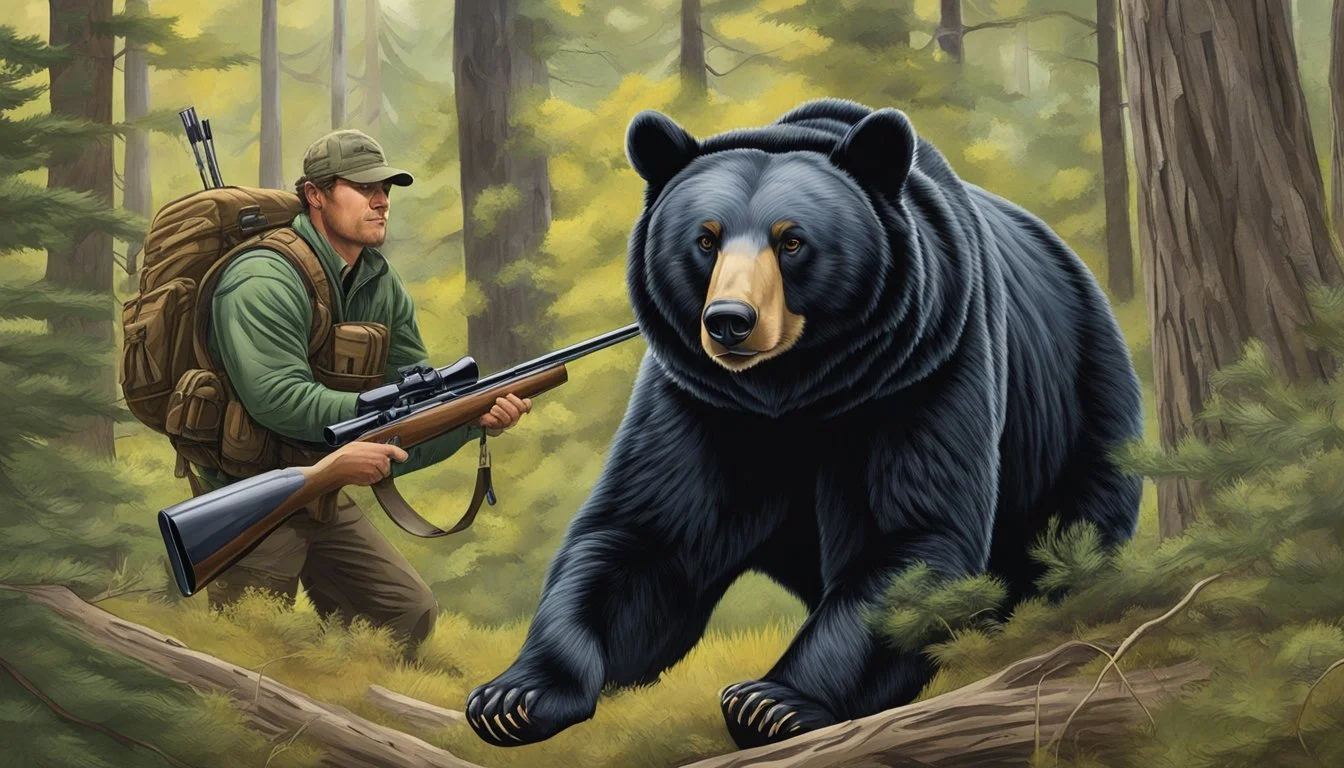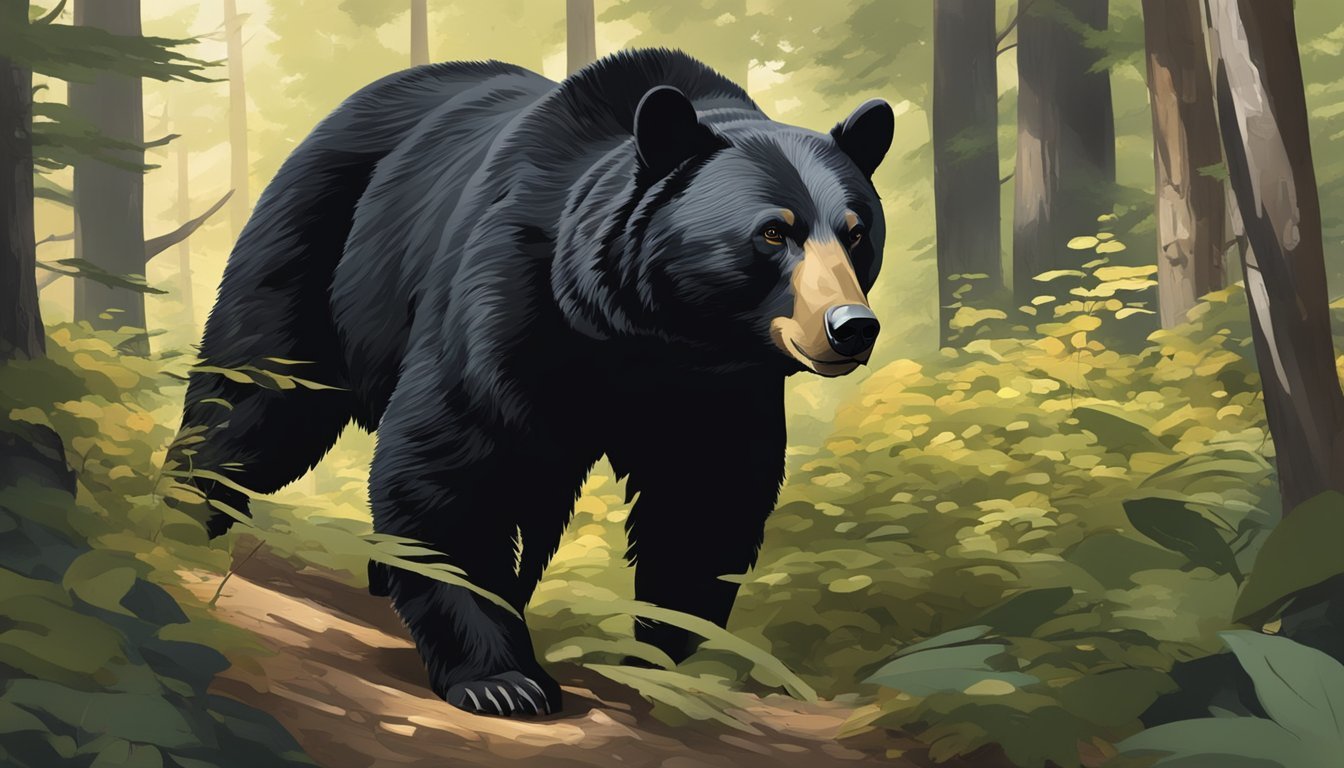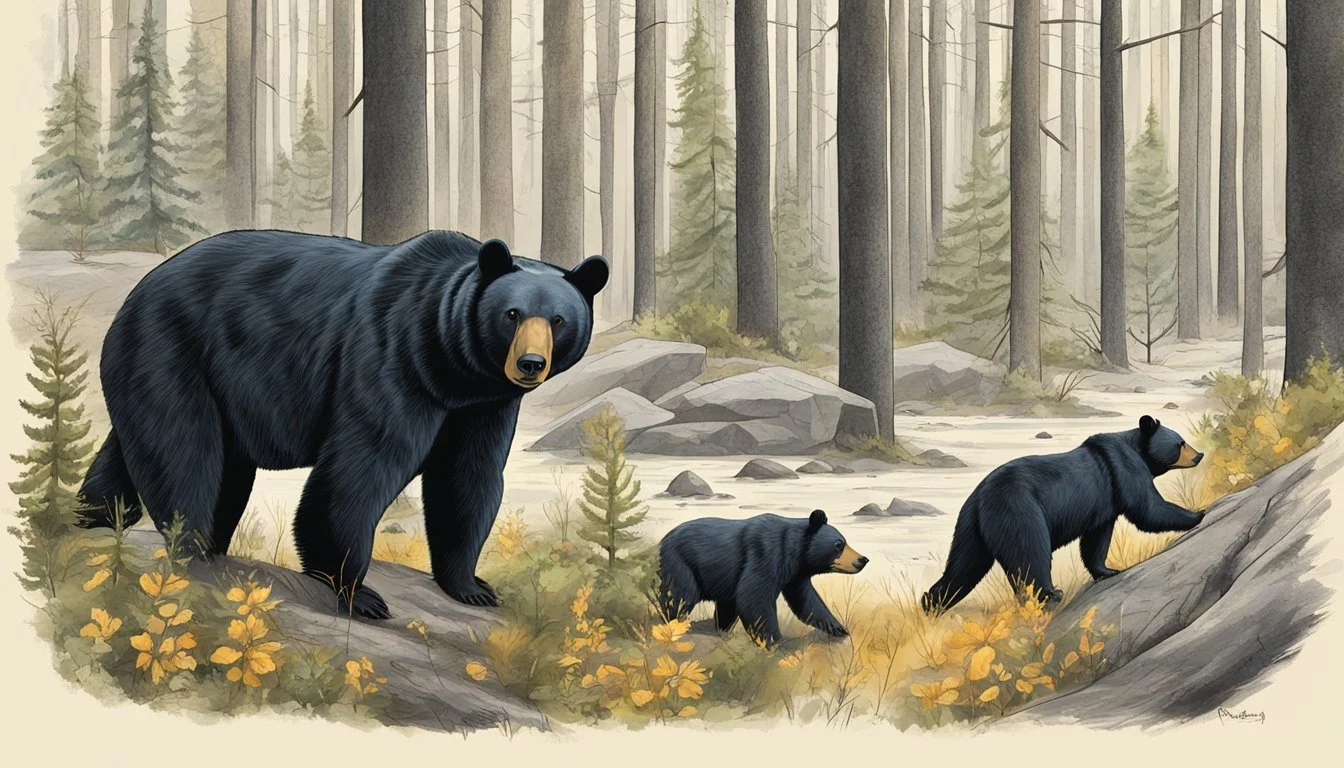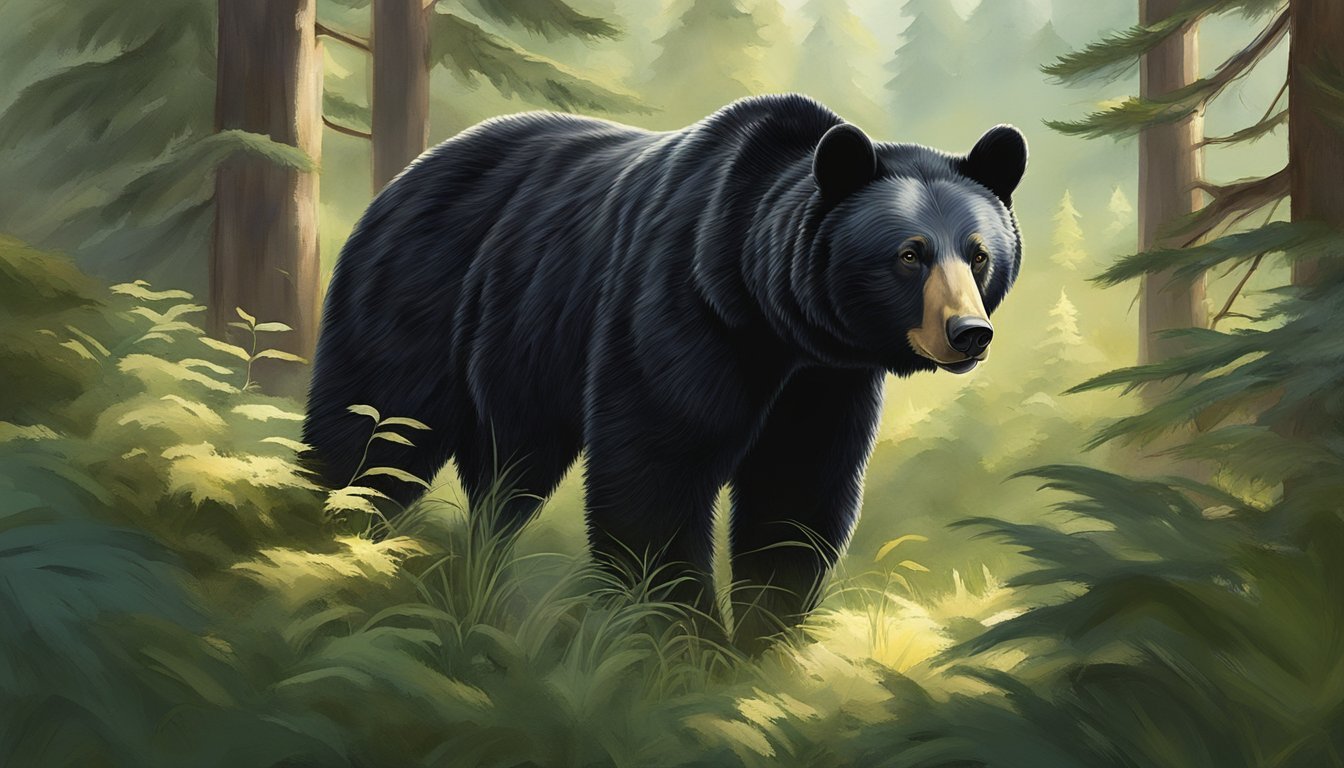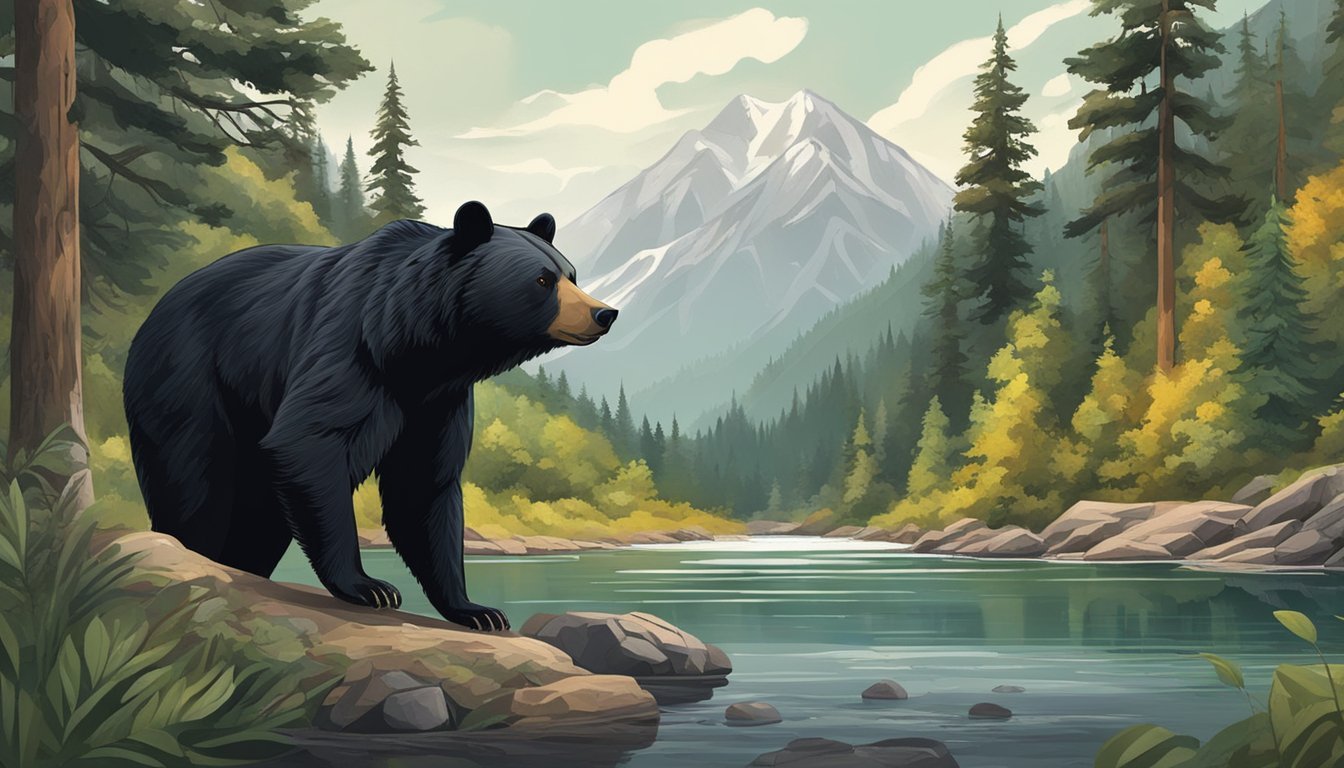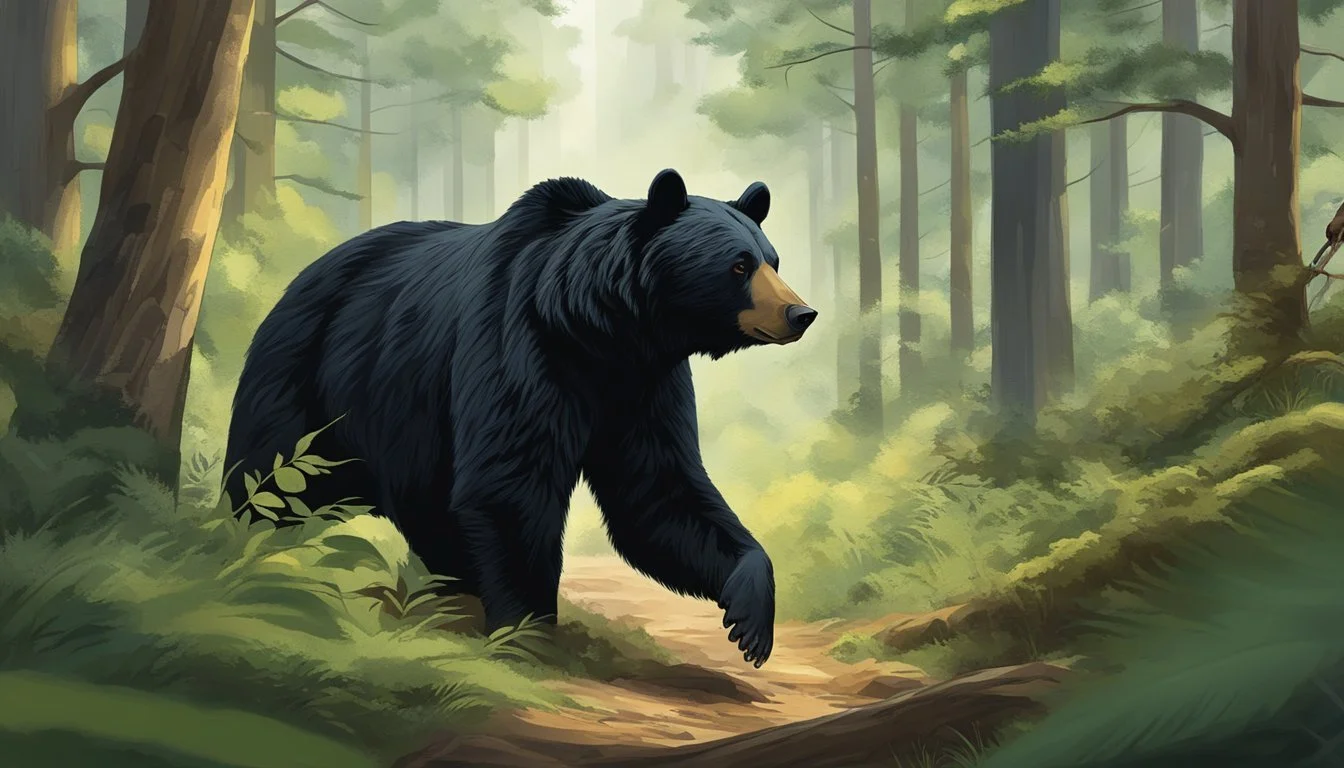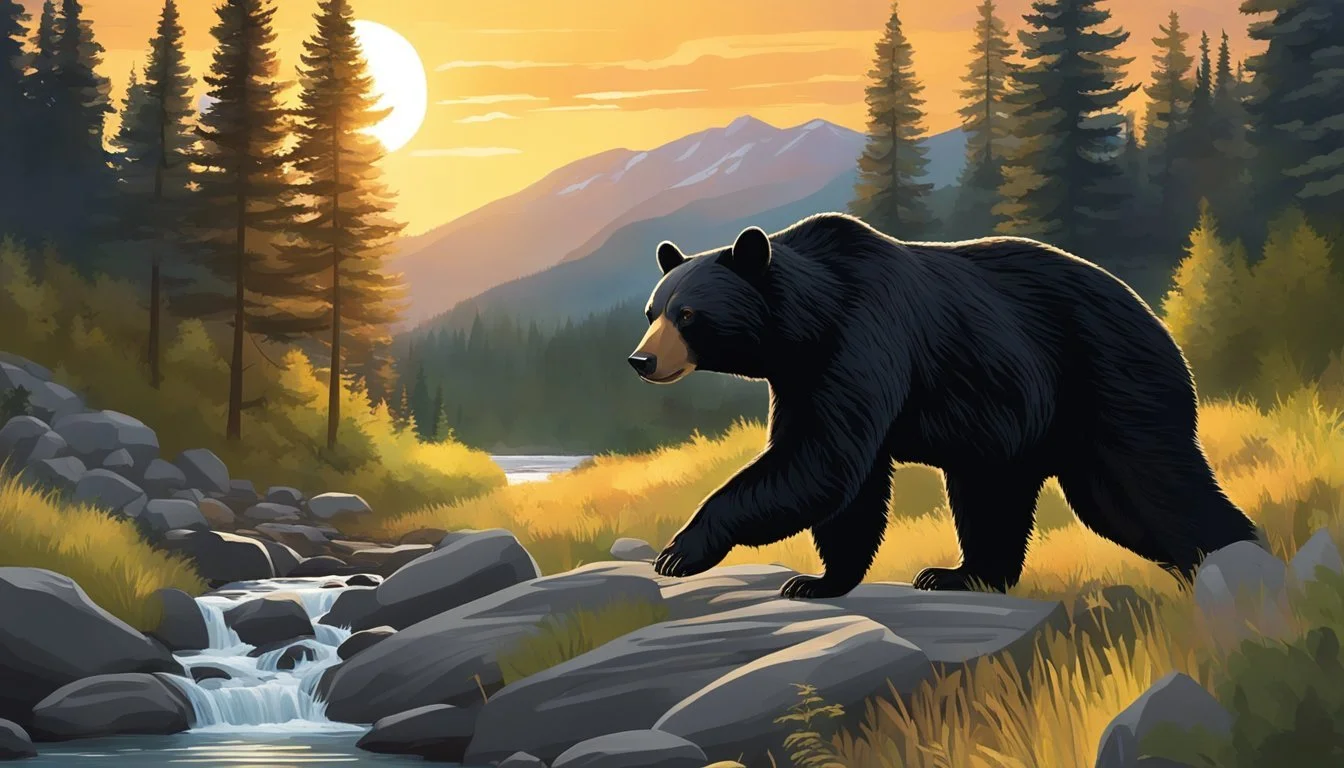Best States for Black Bear Hunting
Top Picks for Avid Hunters
Black bear hunting is an activity that intrigues many outdoor enthusiasts across the United States. Each state with a resident bear population offers a unique experience, but certain states have gained notoriety for providing some of the best opportunities. Enthusiasts often consider factors such as bear density, habitat quality, and the potential for trophy-size bears when selecting their hunting destinations.
States like Alaska stand out due to their significant black bear numbers, estimated at over 100,000, and their vast tracts of accessible forested land. Here, hunters can pursue both the common black-colored bears as well as rare color phases such as the blue-phase near Yakutat Bay. On the other hand, New Mexico is known for producing bears that exceed Boone & Crockett's 21-inch minimum, drawing hunters with the prospect of a record-book black bear, especially in areas like Catron County and the Gila National Forest.
These premier hunting locations are not just about the hunt; they offer an experience immersed in some of the most scenic and untamed parts of America. Each state presents its own set of regulations and seasonal considerations that hunters must adhere to, further emphasizing the importance of preparation and respect for wildlife management and conservation efforts.
Understanding Black Bear Habitats
In the pursuit of black bear hunting, it is crucial to comprehend the types of habitats these animals frequent and how their distribution varies across America.
Habitat Types Across America
Black bears occupy a variety of habitats, but they predominantly favor heavily wooded areas. For instance, the dense forests on the West Coast provide an ideal environment due to the abundance of food sources and cover. These ecosystems range from the wet coastal rainforests of Washington State to the drier mixed coniferous-deciduous forests of California. On the other hand, North Carolina offers expansive hardwood forests in the Appalachian region, which are also conducive to sustaining healthy black bear populations.
Black Bear Population Distribution
The distribution of black bears in America is quite widespread, but they are more concentrated in areas with vast, uninterrupted forest cover. Key states that support sizable black bear populations include:
Alaska: Known for its vast wilderness and minimal human encroachment.
California: Home to a significant black bear population, particularly in the Sierra Nevada mountains.
Pennsylvania: Noted for its substantial forested regions.
North Carolina: Has a prominent black bear presence due to the extensive Great Smoky Mountains and surrounding forests.
In the western United States, especially in mountainous states like Colorado and Montana, bears are found in a mix of coniferous forests and alpine meadows. The bears are often in areas that provide a mix of vegetation types, contributing to a diet that varies seasonally. Each habitat presents unique opportunities and challenges for hunters, necessitating a good grasp of bear behavior and preferences within these areas.
Black Bear Hunting Regulations
Black bear hunting is regulated to ensure sustainable populations and support conservation efforts. Hunters must adhere to the specific licensing requirements, designated hunting seasons, and adhere to state-specific regulations.
Licensing and Tags
In the United States, hunters are typically required to obtain a hunting license and specific bear tags before embarking on a black bear hunt. Bear tags are often limited to control the number of bears harvested.
Public Land: Bear tags might be distributed through a lottery system to manage the number of hunters.
Private Land: Some states allow landowners to obtain tags for hunting on their property, but regulations still apply.
Hunting Seasons
Black bear hunting seasons vary by state and are timed to minimize impact on bear populations.
Spring and Fall Seasons: Many states offer seasons in both spring and fall, while others permit hunting only during one of those periods.
Special Archery Seasons: Certain states provide specific dates for archery hunters, often preceding general seasons.
Special Regulations by State
Each state has its own set of regulations which may include:
Baiting and Hounds: The use of bait or hounds is permitted in some states but prohibited in others.
Reporting Harvests: Successful hunters usually must report their harvest within specific timeframes.
Conservation Practices: States may have regulations to support conservation, such as prohibiting the hunting of sows with cubs.
Note: It's crucial for hunters to consult the latest regulation handbook for the state in which they plan to hunt to ensure compliance with all requirements and conservation measures.
Top States for Black Bear Hunting
When considering black bear hunting in the United States, several states stand out due to their bear populations, hunting regulations, and season opportunities. Most noteworthy are states like Alaska and Wisconsin, which are famed for their black bear hunting experiences.
Alaska: 'The Last Frontier'
Alaska is often at the top of the list for black bear hunters due to its vast wilderness and significant black bear population, estimated to be over 100,000 individuals. The state offers expansive hunting grounds, although accessibility and cost may be a concern for some hunters.
West Coast States
Among the West Coast states, mainstream favorites are noticeably absent from the search results list. However, based on the broad knowledge base, states like California, Oregon, and Washington have notable black bear populations and provide varied hunting experiences from coastal rainforests to inland areas.
Rocky Mountain States
In the Rocky Mountains, Idaho and Montana stand out. Idaho's diverse landscapes offer extensive habitats for black bears, while Montana is known for its sizeable black bear numbers and its relatively liberal hunting regulations.
Eastern States
Further east, Pennsylvania and Maine are known for their strong black bear hunting traditions. Pennsylvania's vast wooded areas support a growing black bear population, while Maine, with its dense forests, presents ample opportunities for hunting enthusiasts. Wisconsin also deserves mention here in the Midwest, with its reputation for both quantity and quality of black bears.
Hunting Techniques and Practices
When pursuing black bears, hunters employ a variety of methods, each with its specific regulations and effectiveness. The three primary techniques are baiting, hound hunting, and spot-and-stalk hunting, offering choices to cater to different terrains and hunter preferences.
Baiting
In many states, baiting is a legal practice where hunters attract bears with a set location of food. This method is known as hunting over bait. The hunter typically sets up a stand, blind, or secure location near the bait site for an optimal vantage point. It's crucial to use legal bait and follow all state-specific guidelines concerning baiting practices.
Hound Hunting
Hound hunting involves the use of specially trained dogs, known as hounds, to track and chase black bears until the bear takes refuge in a tree or another escape-proof spot. The hunter follows the dogs' pursuit until they can get a clear and ethical shot. This technique necessitates a deep understanding of canine handling and strict adherence to state regulations regarding the use of dogs in hunting.
Spot-and-Stalk Hunting
Spot-and-stalk hunting, unlike baiting and hound hunting, relies on the hunter's ability to detect bears from a distance and then carefully approach (stalk) within shooting range without being detected. This method is widely regarded as challenging due to the need for stealth, patience, and the physical demands of traversing rough terrains. Spot-and-stalk hunting emphasizes a hunter’s skill in reading bear behavior and terrain navigation.
Gear and Preparation
When planning for a black bear hunt, selecting the right gear and honing one's skills are critical. The hunter's success is as much dependent on preparation and practice as it is on being in the right place at the right time.
Essential Gear
Clothing:
Durable, camouflage attire suited for terrain and weather conditions
Lightweight, waterproof boots with solid ankle support
Navigation:
Topographical map and compass or a GPS device
Hunting Tools:
Bow: Suitable compound or recurve bow with appropriate draw weight
Glassing: Quality binoculars or a spotting scope for long-distance observation
Safety:
Bear spray or other bear deterrents
First aid kit
DIY Hunt Considerations:
Appropriate tags and hunting licenses for the chosen state
Knowledge of local regulations and bear species habits
Physical and Skills Preparation
Physical Fitness:
Regular cardiovascular training for stamina
Strength exercises, focusing on legs and back for rough terrain
Hunting Skills:
Proficiency with chosen bow, ensuring accurate and ethical shot placement
Mastery in glassing techniques to efficiently spot bears from a distance
DIY Hunt Training:
Backcountry navigation skills to ensure safe and effective hunting grounds traverse
Fundamental survival skills in case of an emergency or unexpected overnight stays
Optimizing Your Hunt
To increase the likelihood of a successful black bear hunt, attention should be paid to selecting the optimal times for the hunt, effective tracking and monitoring strategies, and the potential advantages of working with local outfitters.
Best Times for Bear Hunt
Spring and Fall: Bear hunters often find greater success during the spring and fall. In the spring, bears emerge from hibernation and are actively foraging, giving hunters the opportunity to track them more easily. During the fall, bears are preparing for hibernation and are often found frequenting food sources, which makes them more predictable.
Season Advantages Spring Post-hibernation, increased activity, feeding patterns are more observable Fall Pre-hibernation, bears focus on building fat reserves, frequent known food sources
Tracking and Monitoring
To effectively track bears, hunters should be familiar with bear signs such as tracks, scat, and rubbed trees. Monitoring for signs of different color phase bears, including black, brown, cinnamon, chocolate, and even blonde, can indicate the presence of bear populations within a given area. Utilizing trail cameras can provide insight into bear activities and movements.
Utilizing Local Outfitters
Local outfitters provide invaluable knowledge and experience. Choosing a reputable outfitter can make a significant difference, especially in regions renowned for color phase bears. Outfitters typically have established monitoring systems and can guide hunters to areas with dense bear populations, enhancing the chances of encountering bears during legal hunting seasons.
Safety and Ethical Considerations
When discussing the best states for black bear hunting, it's vital to address both safety measures that protect hunters and others, and ethical hunting practices that ensure the sustainability and respect for wildlife.
Safety Measures
Personal Safety: Hunters should prioritize personal safety by wearing high-visibility clothing and following local firearm regulations. It's vital to be aware of one's surroundings, especially in regions where grizzly bears or brown bears might be present, as these species can be aggressive if encountered.
Bear Awareness: Carry bear spray and know how to use it. Maintain a safe distance from all bears.
First Aid: Always have a first aid kit and know how to use it. Injury can occur far from medical help.
Communication: Bring a means of communication that works in remote areas to call for help if necessary.
Ethical Hunting Practices
Respect for Wildlife: Ethical hunting involves respecting wildlife, making clean, humane shots to avoid unnecessary suffering, and following bag limits set by wildlife management agencies.
Sustainable Practices: Hunters must ensure they are abiding by state regulations, which are put in place to manage bear populations sustainably.
Fair Chase: Focus on fair chase principles, avoiding practices that give hunters an unfair advantage over bears.
Use of Harvest: Ethical hunters utilize as much of the bear as possible, reducing waste and honoring the animal.
After the Hunt
Once a hunter has successfully harvested a black bear, it's crucial to properly process the meat and consider the conservation aspects tied to the hunting of these big game animals.
Bear Processing
When a hunter harvests a black bear, the processing of the bear's meat and fat is an essential step. It is important to quickly field dress the animal to preserve the quality of the meat. Cooling the meat is critical to prevent spoilage, especially in warm climates or during early fall hunts. The fat from a black bear can also be rendered and used for cooking, with its unique flavor being a prized addition to a hunter's larder.
Meat: Careful trimming, separating lean meat from fat, and thorough cooling.
Fat: Rendered down, it can serve various culinary uses.
Trophy and Conservation
Securing a trophy from the hunt aligns with conservation efforts, ensuring that bear populations are managed sustainably. Hunters typically have the option to mount the bear or tan the hide as a commemorative piece. Moreover, by participating in bear hunting, hunters contribute to the conservation of these animals and their habitat. States often use proceeds from hunting licenses and tags to fund wildlife research and habitat preservation.
Trophy: Options range from full-body mounts to skull preservation.
Conservation: Funds from hunts support wildlife management and research initiatives.
Economics of Bear Hunting
The economic impact of bear hunting extends beyond individual expenses, encompassing significant contributions to local businesses and conservation efforts.
Hunting Costs
Hunting for black bears entails various costs for the hunter. These typically include:
Licenses and Tags: Every state mandates the purchase of hunting licenses and tag fees specific to black bears. The cost can range from $25 to $500 depending on residency status and the state in question.
Outfitting and Guides: Many hunters opt for guided hunts, especially in states with rugged terrain or large wilderness areas like Alaska. This service can cost several thousand dollars.
Travel and Lodging: Hunters should factor in the cost of travel to their chosen hunting destination, which can vary widely. Lodging costs also add up, whether it's a hotel stay or renting a cabin.
Gear and Supplies: Essential gear includes appropriate clothing, weaponry, and camping equipment if staying in remote areas. Costs can quickly exceed $1,000 for quality items.
Success rates are influential on the economics of hunting, as greater success can justify the higher upfront costs.
Local Economies Impact
Black bear hunting provides a significant boost to local economies, especially in regions where big game hunting is a substantial part of the culture. Key impacts include:
Spending on Local Services: Hunters spend money on a variety of local services, from butcher shops to local taxidermy, substantially benefiting small businesses.
Tourism and Recreation Revenue: Hunters contribute to the economy through tourism, often dining at local restaurants, shopping at local hunting supply stores, and using other local recreational services.
Conservation Funding: License and tag fees contribute to state conservation programs that support wildlife management and habitat conservation, fostering sustainable hunting practices.
It is clear that bear hunting offers more than the pursuit of game; it plays a crucial role in supporting their local economies and contributing to wildlife conservation outcomes.
Future of Bear Hunting
The future of bear hunting is closely tied to effective conservation efforts and the adaptation of regulatory measures to ensure sustainable populations. This balance is crucial for both the species' well-being and the continued opportunity for hunting.
Conservation Efforts and Population Management
Efforts to manage black bear populations have had varied success over the years. In states like Louisiana, the black bear was once listed under the Endangered Species Act but has seen a resurgence in numbers. The potential revival of black bear hunting in Louisiana after decades is a result of successful conservation programs. However, conservationists and state agencies continue to face challenges in maintaining a balance between growing bear populations and human-bear interactions. The proper management requires ongoing research, monitoring, and adjustment of bear management strategies.
Key Points on Bear Management:
Improving habitat connectivity and quality
Monitoring population trends and genetic diversity
Evolving Regulations and Opportunities
Regulatory changes reflect the shifting landscape of wildlife management. For instance, hunting licenses could be adapted to reflect current population assessments. Such measures help to ensure that hunting pressure does not exceed sustainable limits for bear populations. New opportunities may arise as states like New Mexico, known for record-book color-phase bears, adjust harvest regulations to manage growing bear numbers, targeting specific areas such as Catron County and the Gila National Forest for controlled hunts.
Table of Evolving Regulations in Noteworthy States:
State Regulatory Change Hunting Opportunity Louisiana Revival of Hunting Limited Quotas New Mexico Adjusted Quotas Record-book Bears
Each decade presents new conservation challenges and opportunities. Ensuring the future of bear hunting largely depends on the public’s support for, and compliance with, evolving conservation strategies and regulated hunting practices.
Additional Resources
In the pursuit of becoming a more effective black bear hunter, leveraging additional resources can significantly enhance one's knowledge and skills. Hunters may find valuable insights and tips through various online platforms and authoritative literature.
Online Forums and Communities
Online forums and communities provide a platform for hunters to share experiences, discuss tactics, and seek advice. They can join forums such as:
HuntingNet.com Forums: A comprehensive space with discussions ranging from hunting strategies to gear reviews.
ArcheryTalk Forum: Ideal for hunters interested in archery, with a section dedicated to bear hunting.
Books and Research Materials
Books and official research materials can offer in-depth knowledge on black bear habits, hunting techniques, and conservation. Key materials include:
"The Black Bear Hunting Encyclopedia" by John Eberhart, detailing various aspects of black bear hunting.
State Wildlife Agency Publications: Many states publish guides and reports on wildlife management, including species-specific information on black bears.




